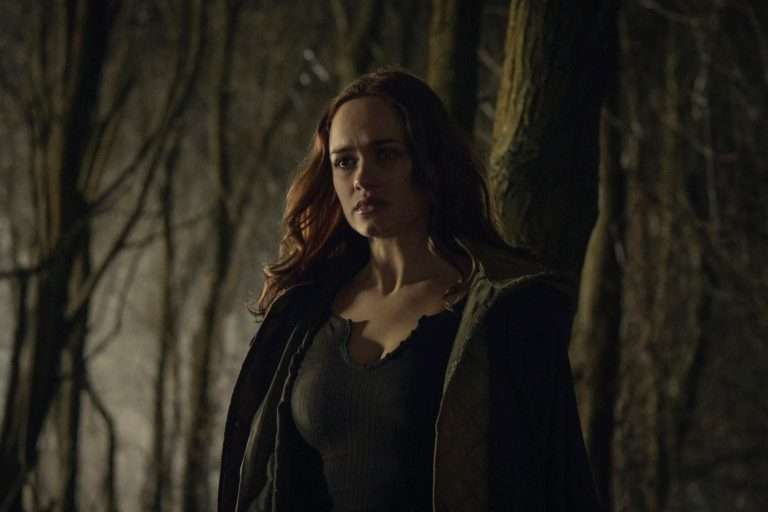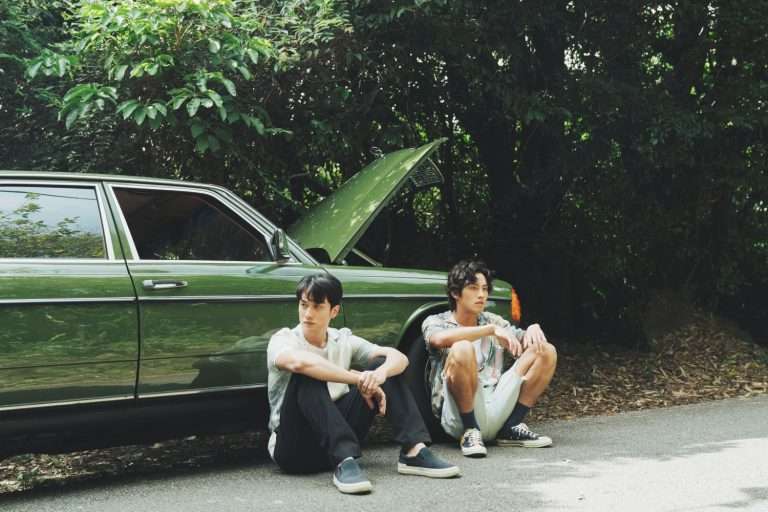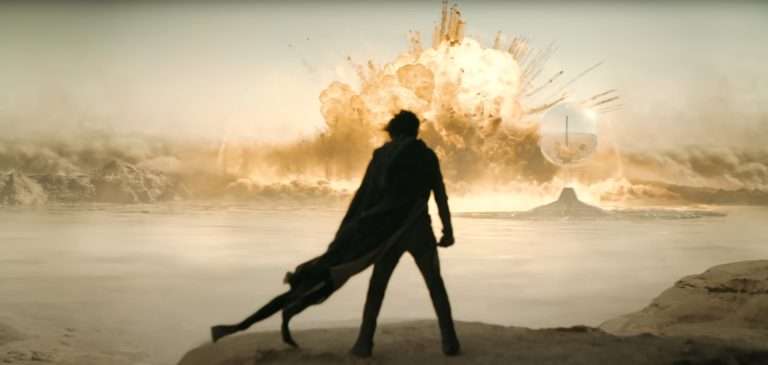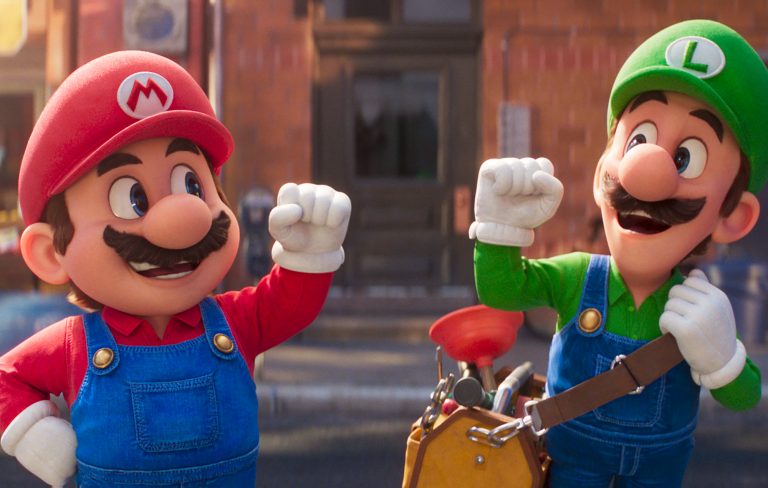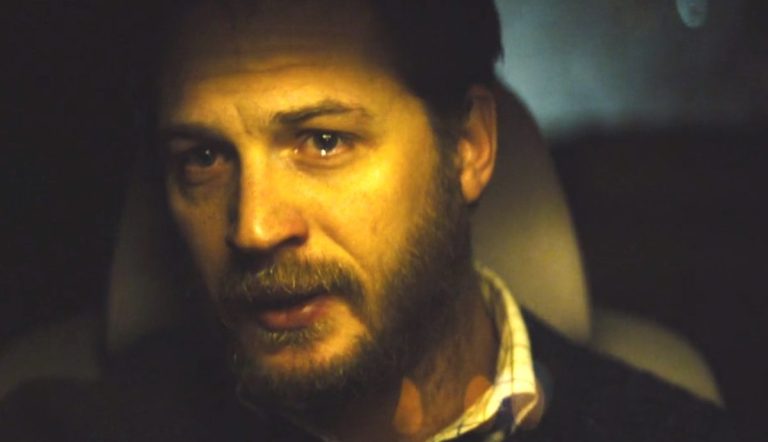The Day After Tomorrow (2004) presents a stark, chilling vision of a world brought to its knees by climate catastrophe—an apocalyptic consequence of humanity’s ignorance and its reckless dismissal of scientific warnings. When paleoclimatologist Jack Hall’s urgent predictions go unheeded, a series of unprecedented superstorms ravage the globe, plunging entire continents into a new ice age in mere days. From a devastating hailstorm pounding Tokyo to the sudden deep freeze that entombs Manhattan in solid ice, the film follows Jack, his son Sam, and a small band of survivors as they battle to endure nature’s furious retribution.
Yet, even amid this frozen apocalypse, the story does not end in total extinction. Against impossible odds, Jack reaches Sam and his friends, sheltering in the New York Public Library, and rescues them from the deepening freeze. The film closes with helicopters evacuating the remaining survivors from the northern wastelands, while those who fled south await rescue in makeshift refugee camps. The final scenes hint that, though scarred and scattered, humanity endures, left to rebuild in a world forever transformed by the consequences of its own folly.
Spoilers Ahead
The Day After Tomorrow (2004) Plot Summary and Movie Synopsis:
How does the Beginning of the Film Suggest the Upcoming Climate Change?
The film opens with Jack Hall and his team drilling ice-core samples from the Larsen Ice Shelf, which represents human efforts to decipher the climatic record. However, the breaking apart of the ice shelf not only serves as a dramatic opening to the film, but it also serves as a clear beginning to a demonstration that Earth’s climate system is potentially unstable. The collapse serves as a striking visual cue that nature is turning violent, foreshadowing a sudden and catastrophic shift brought on by climate change.
Jack’s presentation at the U.N. conference in New Delhi helps set the stage for this next escalation. He tells the audience that the scientific evidence suggests that a new ice age could be precipitated by human-made climate change. Rather than direct action, however, Jack’s warning is about as effective as a political statement would be, as his scientific information to this important political organization is dismissed, in particular, by the US vice president, Becker.
This rejection of scientific evidence reinforces a continuing theme; it’s simply not the time for the people of the world to accept this truth. This early portrayal of denial sets up both narrative tension and foreshadows both the state of inaction and the consequences of this state. The introduction of Professor Terry Rapson provides a subtle but strong reinforcement of Jack’s warnings. Rapson, a seasoned oceanographer, agrees with Jack’s analysis, which adds scientific credibility to Jack’s theory. Their alliance signals a growing but still minor voice of reason that stands in contrast to political inaction.
How does Climate Change Start to affect the World?
The impact of climate change is now happening in immediate and devastating ways. A hailstorm suddenly hits Tokyo, indicating the increasing instability of the atmosphere. Meanwhile, astronauts aboard the International Space Station have spotted three superstorms forming over Canada, Europe, and Siberia. The initial imagery demonstrates that climate systems are now beginning to break down on a planet-wide scale. Rapson’s team has also observed rapid temperature declines across the North Atlantic, and several buoys have detected the rapid drop in temperature. Their observations confirm Jack Hall’s earlier model. What is shocking to the scientists is the pace of the climate change event; it is now evident that climate change is not a theoretical discussion, but something that is occurring at a very high speed.
The natural disasters continue to escalate. In the United States, remnants of a hurricane transition into a deadly outbreak of tornadoes that obliterates the city of Los Angeles. Meanwhile, a British rescue mission ends tragically when three helicopters attempting to reach the royal family at Balmoral Castle crash while entering the eye of a superstorm. These events illustrate the unpredictable lethality of the new climate; an invisible freeze zone can instantly disable modern technology.
Realizing the urgency, Jack, Rapson, and NASA meteorologist Janet Tokada collaborate to develop a forecast model based on Jack’s research. Initially, they estimate the collapse will happen over 6–8 weeks. However, the situation worsens, and they revise the timeline to just 7–10 days. This drastic update highlights the failure of previous models to predict such rapid progression.
Rapson alerts Jack that air from the upper troposphere is descending into the eyes of the cyclones. The temperature there is so extreme, below −150°F, that it instantly freezes everything, including helicopter fuel. This scientific discovery explains the crash and confirms the lethal nature of the storm cores.
What is Happening with Jack’s Family Amidst the Disaster?
As the climate disaster unfolds, Jack’s family faces growing danger. His son, Sam, is in New York City for an academic decathlon with friends Brian, Laura, and their new companion JD. When the North American superstorm hits, violent winds and heavy rainfall flood Manhattan, halting all transport. The group is left stranded, symbolizing how no one, regardless of preparation, can escape the storm’s reach. Amid rising chaos, a massive storm surge strikes the city. The group finds refuge in the New York Public Library. This decision, driven by Sam’s awareness and quick thinking, proves lifesaving. While assisting a police officer in rescuing two French-speaking tourists, Laura injures her leg badly.
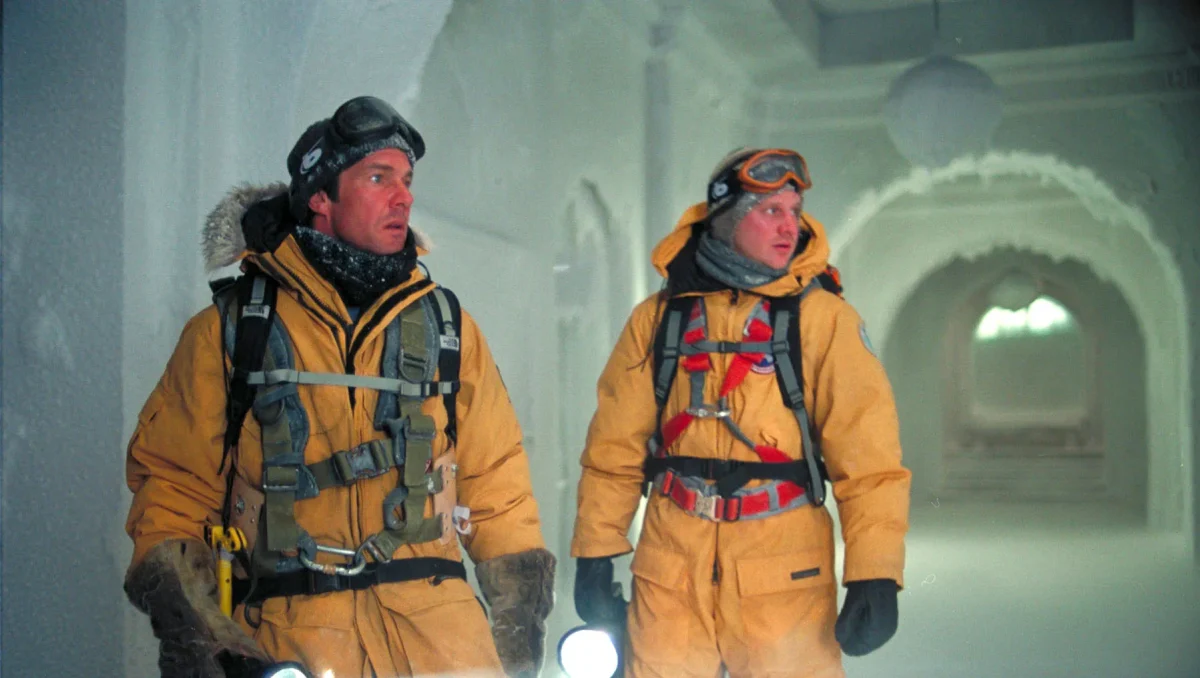
Her wound becomes a crucial concern as it risks infection and further complications in the freezing conditions. Despite the fear and uncertainty, the group sticks together, showing resilience and compassion. Sam manages to contact Jack and his mother Lucy via a rare working payphone. Jack immediately warns Sam of the superstorm’s deadly core and urges him to stay indoors and keep warm. He promises to come for him, revealing not just his scientific responsibility but his emotional drive as a father.
This moment deepens the personal stakes amid the global crisis. Meanwhile, Lucy stays behind at her hospital to care for her young patients. She refuses to abandon them, showing courage and dedication. Eventually, authorities rescue her and the children, highlighting the importance of human empathy even during disaster. While the world spirals into chaos, Jack’s family embodies resilience. Each member faces the storm differently, with bravery, compassion, and a fight for survival in the face of nature’s wrath.
The Day After Tomorrow (2004) Movie Ending Explained:
How do Jack and Jason Survive the Storm?
As the storm worsens, President Blake follows Jack’s advice and orders a mass evacuation to Mexico. The northern states are instructed to shelter in place. Despite the danger, Jack, Jason, and Frank head toward New York City to rescue Sam. Their decision shows Jack’s determination as a father and belief in scientific models. Along the way, while crossing Pennsylvania, Frank falls through a snow-covered skylight. Realizing he’ll drag the others down, he cuts his own rope, sacrificing himself. His action reflects the dire conditions and the human cost of survival.
As they continue, Jack and Jason are forced to navigate brutal weather. When the eye of the storm nears, they take refuge in an abandoned restaurant. Their survival depends on quick thinking and understanding the storm’s freezing core, which Jack had predicted. Shelter becomes their only shield against the −150°F temperatures that instantly kill. Meanwhile, Sam proves his maturity and instincts in the library. Despite others leaving once the floodwaters freeze, Sam insists it’s safer to stay. His choice is based on his father’s warning and his trust in science over panic.
When Laura develops sepsis, Sam risks his life to find antibiotics. He, Brian, and JD enter a Russian cargo ship frozen in the city. There, they battle wolves that have escaped the Central Park Zoo and survive, returning with medicine just before the superstorm’s eye freezes Manhattan. Jack and Jason survive by relying on knowledge, sacrifice, and instinct. Sam mirrors these qualities, making life-saving decisions under pressure. Their parallel journeys highlight survival not just through strength, but through trust, love, and courage.
Does the Storm Become the Reason for Human Extinction?
The superstorms wreak global havoc but do not lead to human extinction. When the storms finally dissipate, the Earth is left deeply scarred. Ice sheets now cover much of the Northern Hemisphere, altering geography and climate permanently. Cities freeze over, and life as it was known no longer exists. Yet, humanity endures.
Sam plays a crucial role in this survival. By trusting his father’s warning, he chooses to stay inside the New York Public Library, even when others leave. His decision proves wise. Days later, Jack and Jason arrive and discover that all who left perished in the freezing cold, while Sam’s group survives. His rational thinking and leadership under pressure save lives, showing how human resilience, when paired with scientific understanding, can outlast even nature’s fury.
Jack’s arrival symbolizes a reunion of both family and hope. He sends a radio message to U.S. forces in Mexico, initiating rescue operations. This act reflects that while civilization has collapsed in many regions, coordination and governance still exist. President Becker, having survived the storm, issues a public apology for ignoring scientific warnings. His speech from the U.S. embassy in Mexico, broadcast on The Weather Channel, marks a turning point in leadership. Rescue missions begin, including helicopters sent to New York to save Sam and the others. From space, astronauts observe a frozen Earth, transformed yet peaceful. They remark on the air’s clarity, hinting at the environmental reset. The storm may not end humanity, but it forces a reckoning: with nature, leadership, and survival.



